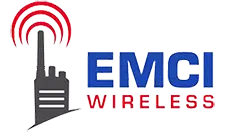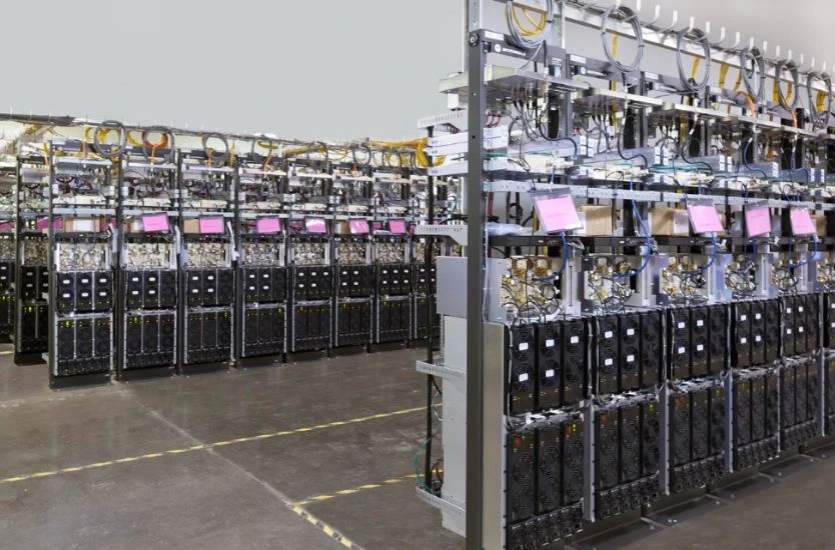We know—that’s a lot of letters coming at you all at once. FDMA, TDMA, LMR… it can sound like alphabet soup if you’re not used to it. But don’t worry, we’re here to break it down into plain and simple language. In this article, we’ll walk you through what these terms actually mean, how they work, and which one might be the better fit for your radio network needs. Let’s get started!
What is LMR? (And Why You Care)
Land Mobile Radio (LMR) systems are what keep teams connected when seconds count and cell phones just won’t cut it. Think about police officers coordinating during an emergency, construction crews handling a big job site, or school security teams keeping campuses safe. LMR systems let groups talk instantly with the push of a button, without worrying about dropped calls or crowded networks.
Instead of relying on phone towers, LMR networks use their own frequencies to create a private communication channel. This makes them faster, more reliable, and a lot more direct than regular cell service. LMR is especially popular in industries like public safety, transportation, utilities, and business operations where clear, instant communication is a must.
Choosing the right setup for your LMR network isn’t just about buying radios—it’s about picking the technology that fits how you work. That’s where FDMA and TDMA come in. Each method manages communication a little differently, and understanding the basics can help you pick the best path for your team to stay in touch.
FDMA and TDMA: A Quick Rundown
Imagine you’re at a busy food truck festival. Every truck has its own line of people, and everyone stays in their own lane to place an order. That’s one way to keep things organized. Now imagine a different setup: one giant line, but people take turns stepping up to whichever truck is open next. It’s still organized, but the traffic flows differently.
That’s kind of how FDMA and TDMA work when it comes to radio communication. They both help manage who gets to “talk” and when, but they do it in very different ways:
- FDMA (Frequency Division Multiple Access): Each call gets its own frequency, like each food truck having its own line. Radios stay on one lane (or channel) during the whole conversation.
- TDMA (Time Division Multiple Access): Calls share the same frequency, but they take turns using it. It’s like sharing one line, but everyone gets a turn at just the right moment, without bumping into each other.
Both systems are organized. They just handle traffic differently depending on how many users there are and how busy the “festival” (your network) gets.
How FDMA Works
FDMA, or Frequency Division Multiple Access, keeps things simple: every user gets their own private lane to talk on. Once you’re assigned a frequency, it’s all yours during the call. No sharing, no switching, no waiting for your turn. Think of it like a walkie-talkie set to a clear channel—press the button, talk, and that channel is yours until you’re done.
In an LMR system, FDMA works by splitting the available radio spectrum into slices. Each slice (or frequency) is handed out to a different conversation. Because each call stays on its own slice, there’s less chance of overlap or interference between users.
This setup is great for smaller networks where you don’t have a huge crowd of people trying to talk at the same time. It’s often used in public safety systems like P25 Phase 1, where clear, reliable communication is more important than cramming in a lot of users.
The main trade-off? You need more spectrum if your team grows. Since each conversation takes up its own lane, you can run out of room faster compared to other systems. But for groups that value simple, direct communication, FDMA is a steady and dependable choice.
How TDMA Works
TDMA, or Time Division Multiple Access, takes a different approach. Instead of giving every user their own lane, everyone shares the same lane—but takes turns using it. Imagine a single road where cars pass through one at a time at a green light. It stays organized because the timing is carefully controlled.
In an LMR system, TDMA works by dividing a single frequency into time slots. Each radio call gets assigned a time slot, which means two users can share the same frequency without talking over each other. It all happens so fast that users never notice—they press the button and talk just like normal.
TDMA is really good at squeezing more out of limited spectrum. With two time slots on the same frequency, it’s like doubling the number of conversations without needing extra lanes. That’s why it’s a popular choice for busier systems like DMR Tier II and P25 Phase 2.
The catch? Timing has to be perfectly synced, so the equipment tends to be a little more complex. But if you need to handle lots of users or want to make the most out of your available frequencies, TDMA offers a smart way to keep communication flowing.

Pros and Cons of FDMA
Now that you know how FDMA works, let’s talk about the good and not-so-good sides. Like anything else, FDMA has its strengths and its limits, depending on what your team needs.
Pros of FDMA
- Simple system setup: Each call sticks to its own frequency without complicated timing or scheduling.
- Strong performance over long distances: Good choice for wide coverage areas like rural towns or big outdoor job sites.
- Less timing-related maintenance: Without the need for syncing time slots, radios and repeaters tend to be easier to manage.
- Reliable audio clarity: Since each conversation gets its own lane, there’s little risk of two calls stepping on each other.
Cons of FDMA
- Limited spectrum efficiency: Every call needs a full frequency, which can fill up fast when lots of people need to talk.
- Harder to scale: Adding more users often means needing more frequencies or upgrading to a different system.
- Less battery-friendly: Radios transmit continuously during conversations, which can drain the battery faster compared to TDMA.
Pros and Cons of TDMA
TDMA brings some powerful advantages to the table, but it’s not perfect for every situation.
Pros of TDMA
- Better spectrum efficiency: Two conversations can happen on the same frequency at once, making the most out of limited airspace.
- Supports larger networks: Perfect for busy systems where lots of people need to talk without running out of room.
- Battery-saving design: Radios only transmit during assigned time slots, which helps stretch battery life during long shifts.
- Smooth scalability: Easier to grow your system without needing a ton of extra frequencies or equipment upgrades.
Cons of TDMA
- More complex equipment: Managing those time slots requires more advanced radios and infrastructure.
- Timing must be spot-on: If devices fall out of sync, communication glitches can happen.
- May need tighter maintenance schedules: To keep everything running smoothly, TDMA systems sometimes need more frequent checks.
Choosing the Right Fit for Your LMR Network
So, FDMA and TDMA both get the job done, but they go about it in different ways. Picking the right setup for your LMR network really comes down to how you plan to use it.
If your organization has a smaller team, needs wide coverage, and values simplicity over anything else, FDMA could be your best bet. Think of a rural fire department or a construction crew spread out across open land. In these cases, having dedicated lanes for each conversation can mean clear, reliable communication without a lot of extra tech to manage.
On the other hand, if you’re working in a busier environment where lots of people need to talk at once, like an airport security team, a city bus system, or a large business campus, TDMA might be the smarter choice. By stacking two conversations into the same frequency, you double your capacity without doubling your cost. Plus, TDMA’s energy-saving design is a bonus for teams that rely on handheld radios during long shifts.
Let’s look at some hypothetical examples.
- A city like Miami might lean toward P25 Phase 1 FDMA systems to support wide-area public safety communication where clear, steady signals are a priority.
- A city known for tourism, like Orlando, could use P25 Phase 2 TDMA systems to handle more users without expanding the frequency range.
Bottom line: Think about your team size, how busy your network will be, your coverage needs, and your future growth plans. Getting the right fit now will save you a lot of time (and budget) later.
How EMCI Wireless Can Help
Choosing between FDMA and TDMA isn’t always easy—but you don’t have to figure it out alone. EMCI Wireless has been helping organizations across industries find the right radio solutions for their teams, whether it’s setting up a simple FDMA system or building a larger TDMA network for busier operations.
Every organization is different. Public safety, business communication, infrastructure growth—your needs shape the system that’s right for you. Our team can walk you through your options, answer your questions, and recommend equipment that fits how you work today and where you’re headed tomorrow.
Ready to get started? Request a free consultation with EMCI Wireless and let’s build a communication network that works the way you need it to.

